*NURSING > QUESTIONS & ANSWERS > NSG 3370 STUDY QUESTIONS AND ANSWERS (A GUARANTEED) (All)
NSG 3370 STUDY QUESTIONS AND ANSWERS (A GUARANTEED)
Document Content and Description Below
NSG 3370 STUDY QUESTIONS AND ANSWERS (A GUARANTEED) 1. During pregnancy, dyspnea accompanied by increased respiratory rate, cough, rales, or respiratory distress raises concerns of: peripartum car... diomyopathy Explanation: Dyspnea accompanied by increased respiratory rate, cough, rales, or respiratory distress raises concerns of possible infection, asthma, pulmonary embolus, or peripartum cardiomyopathy. 2. The middle section of the thoracic cavity containing the esophagus, trachea, heart, and great vessels is the: mediastinum Explanation: The middle section of the thoracic cavity containing the esophagus, trachea, heart, and great vessels is the mediastinum. The right and left pleural cavities, are on either side of the mediastinum and those contain the lungs. The visceral pleura encloses the lung. The pericardium surrounds the heart. 3. A patient is unable to identify the smell of an orange. This inability could reflect an abnormality in cranial nerves: CN I Explanation: Cranial Nerve I is the olfactory nerve responsible for the sense of smell. To test the sense of smell, the examiner presents the patient with familiar and nonirritating odors. A person should normally perceive odor on each side and correctly identify the source. Cranial Nerves II and III assess vision and pupillary reaction. Cranial Nerve VIII tests the hearing and balance. 4. A transient ischemic attack is: a transient episode of neurologic dysfunction by focal brain, spinal cord, or retinal ischemia, without acute infarction Explanation: TIA is now defined as “a transient episode of neurological dysfunction caused by focal brain, spinal cord, or retinal ischemia, without acute infarction.” Ischemic stroke is “an infarction of central nervous system tissue” that may be symptomatic or silent. The other terms are not related to the new definitions. 5. The term asteatosis refers to: skin that is dry, flaky, rough, and often itchy Explanation: Physiologic changes of aging include loss of elastic turgor, and wrinkling. Skin that appears dry, flaky, rough, and itchy is termed asteatosis. Sun exposure can cause damage to the skin resembling an appearance as weather beaten, thickened, yellowed, and deeply furrowed. Seborrheic keratosis appear as raised, yellowish lesions that feel greasy, velvety, or warty. Painful vesicular lesions in a dermatomal distribution may suggest herpes zoster. 6. An enlarged liver with a smooth tender edge may suggest: right-sided heart failure. Explanation: An enlarged liver with a smooth, tender edge suggests inflammation, as in hepatitis, or venous congestion, as in right-sided heart failure. Cirrhosis, hematochromatosis (increased amount of iron in the blood), and lymphoma produce an enlarged liver with a firm, nontender edge. An enlarged liver that is firm or hard and has an irregular edge or surface suggests hepatocellular carcinoma. 7. New onset hypertension with proteinuria or end-organ damage is: preeclampsia Explanation: Chronic hypertension occurs when systolic BP (SBP) >140 mm Hg or diastolic BP (DBP) >90 mm Hg documented prior to pregnancy, before 20 weeks, or beyond 12 weeks postpartum. Gestational hypertension refers to elevated blood pressure detected after 20 weeks gestation in the absence of proteinuria. Pre-eclampsia occurs in a woman who was previously normotensive but now has new onset hypertension with either proteinuria or end-organ damage. Primary hypertension, formerly known as essential hypertension, is a disorder which is associated with elevated blood pressure and an unidentifiable cause. 8. The psoas muscle group and muscles of the abdominal wall assist with: flexion Explanation: The psoas muscle group and muscles of the abdominal wall assist with flexion. The deep intrinsic muscles of the back assist with extension. The abdominal muscles and intrinsic muscles of the back assist with rotation. Lateral bending uses the abdominal muscles and intrinsic muscles of the back. [Show More]
Last updated: 1 year ago
Preview 1 out of 71 pages
.png)
Reviews( 0 )
Document information
Connected school, study & course
About the document
Uploaded On
Jul 20, 2021
Number of pages
71
Written in
Additional information
This document has been written for:
Uploaded
Jul 20, 2021
Downloads
0
Views
40

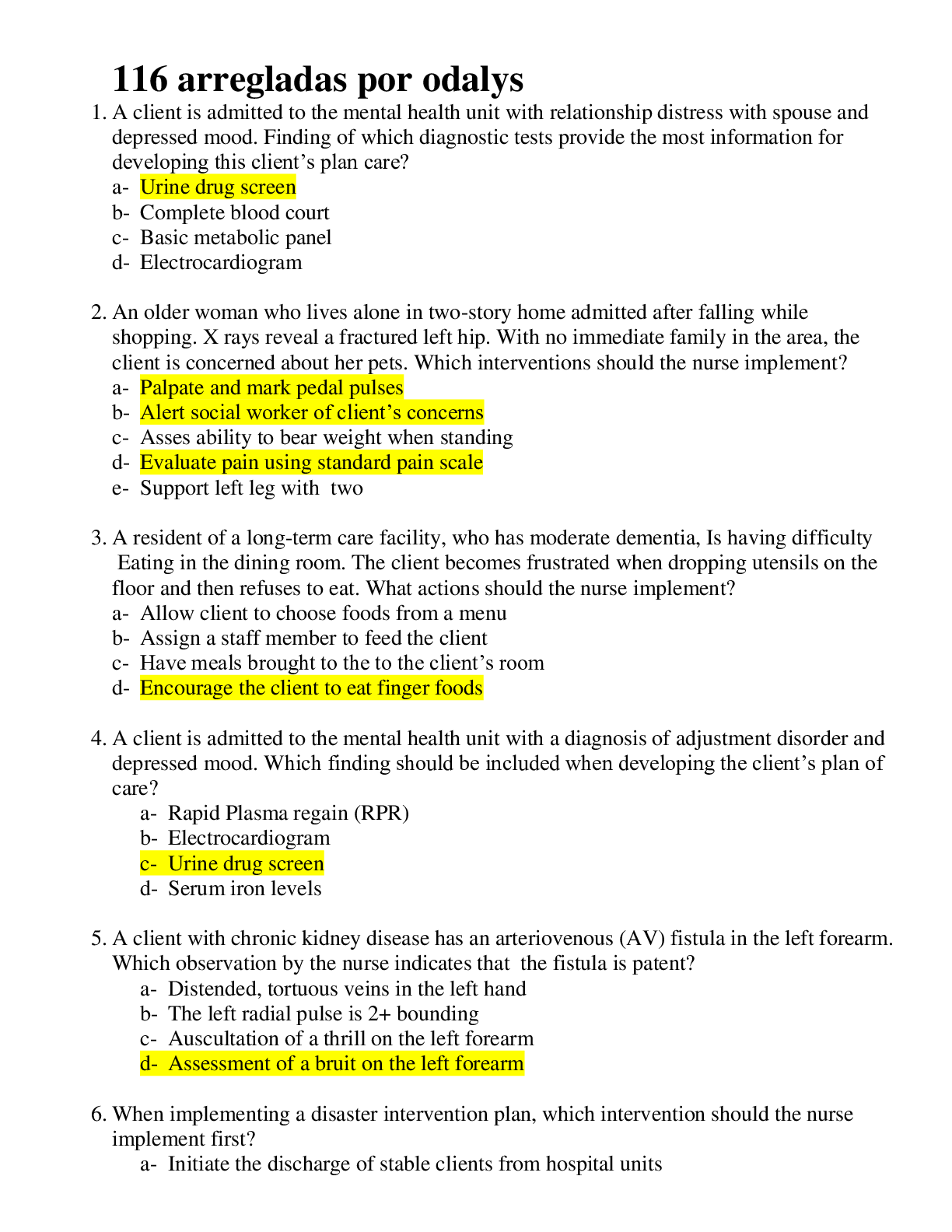
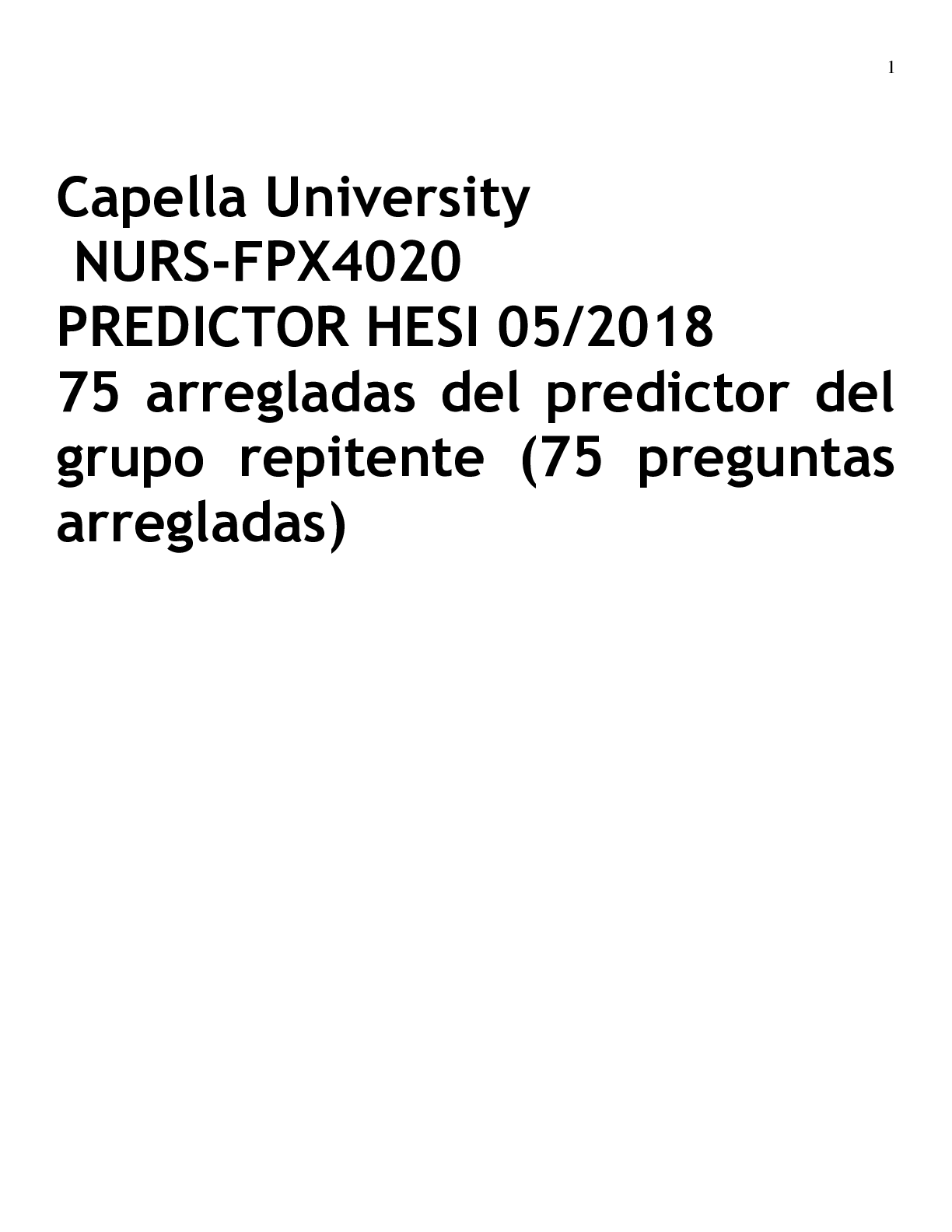
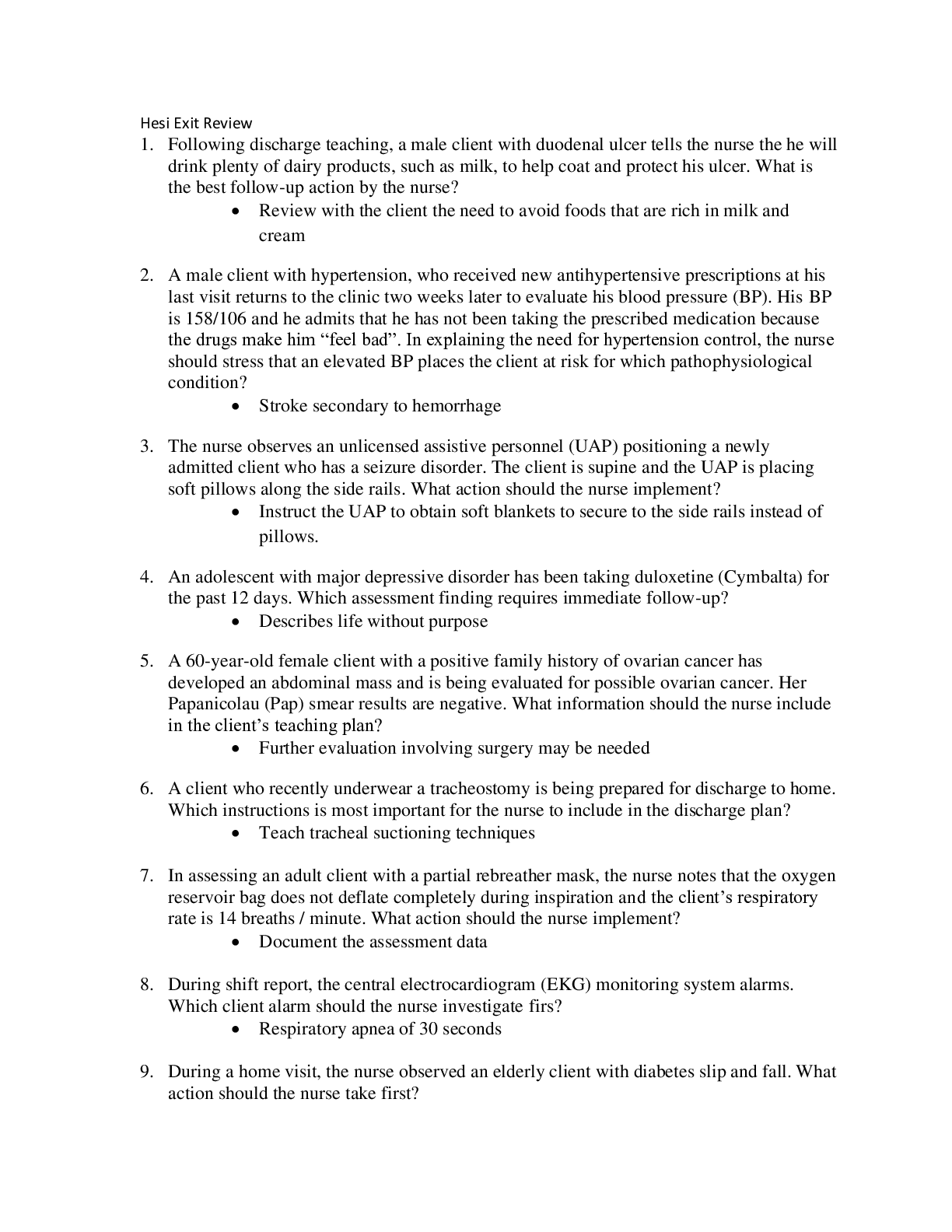


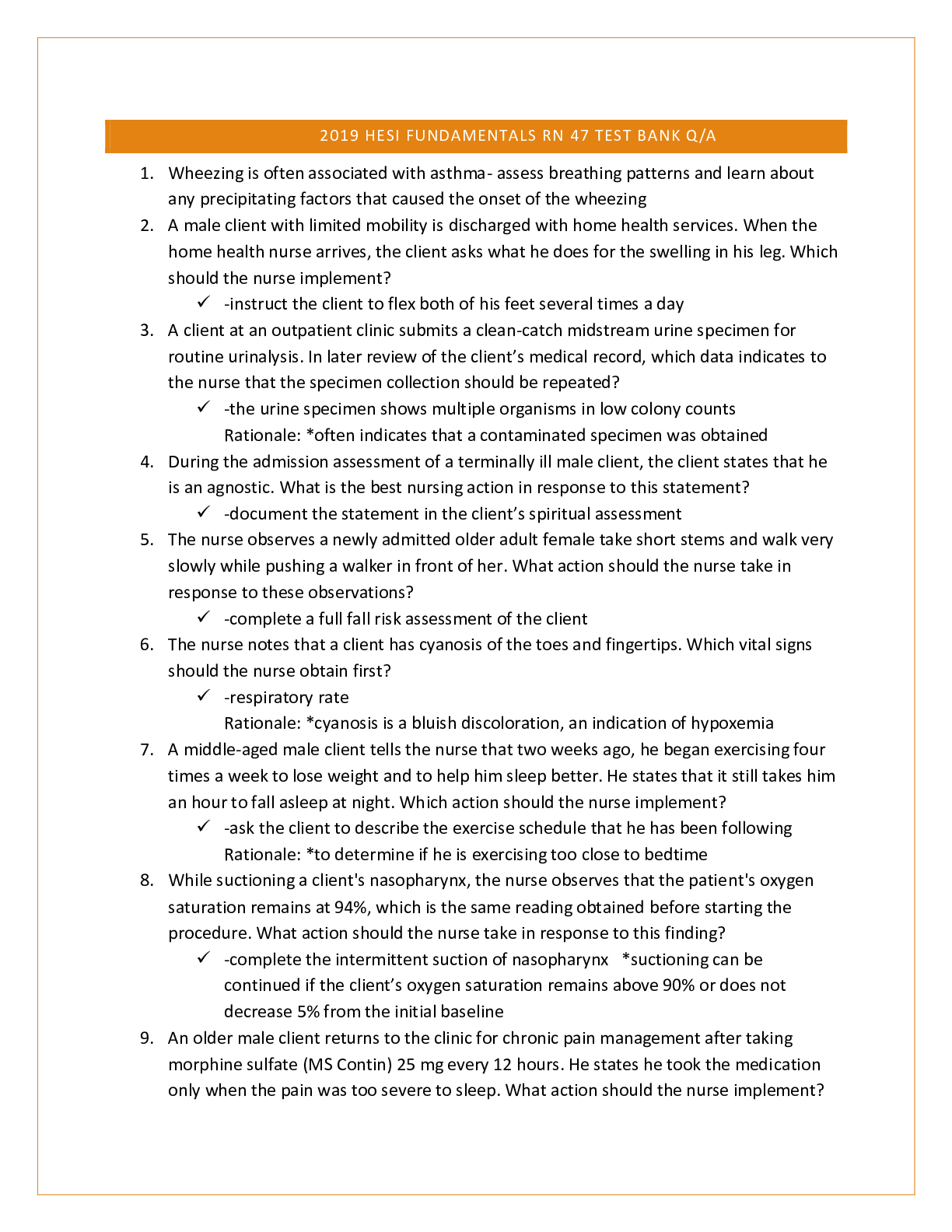
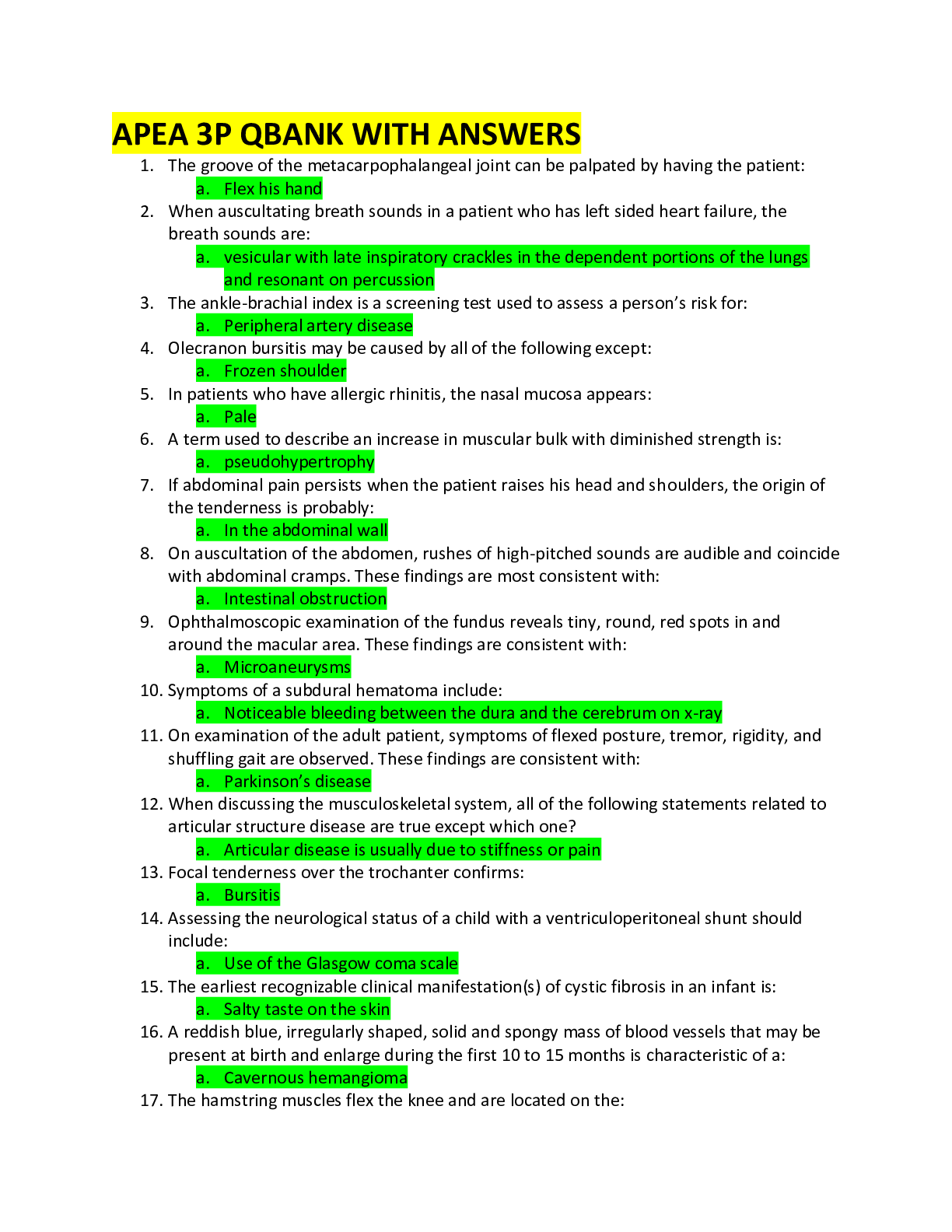
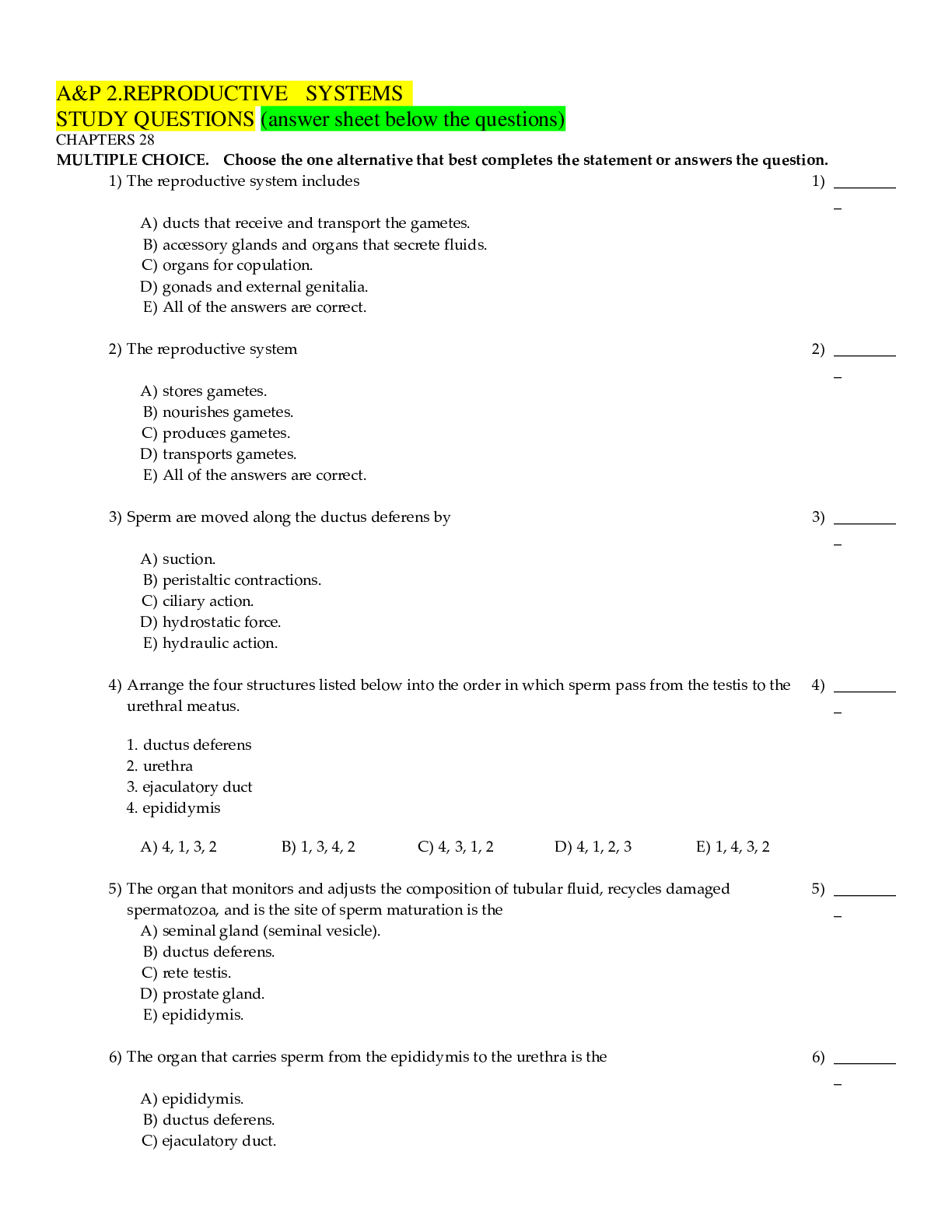
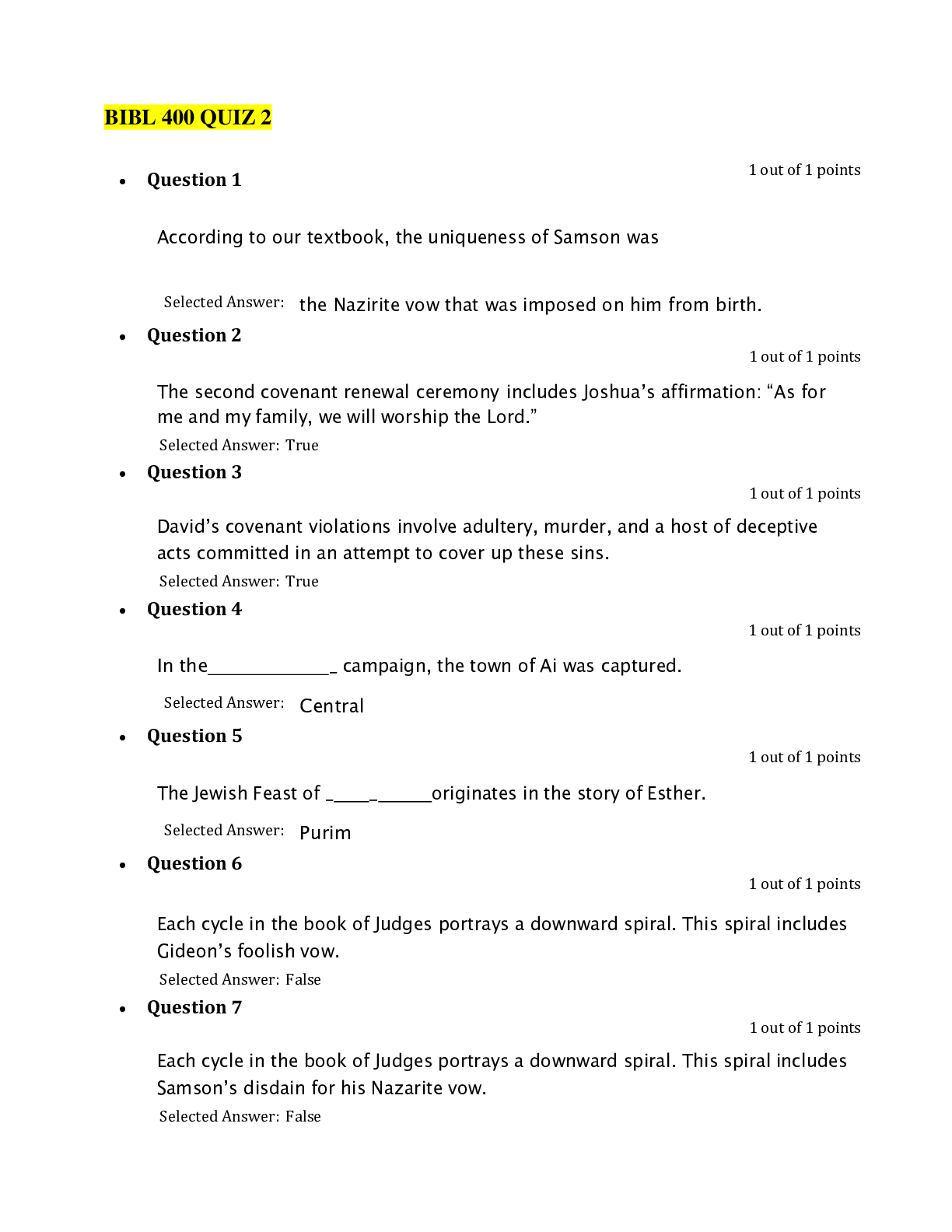
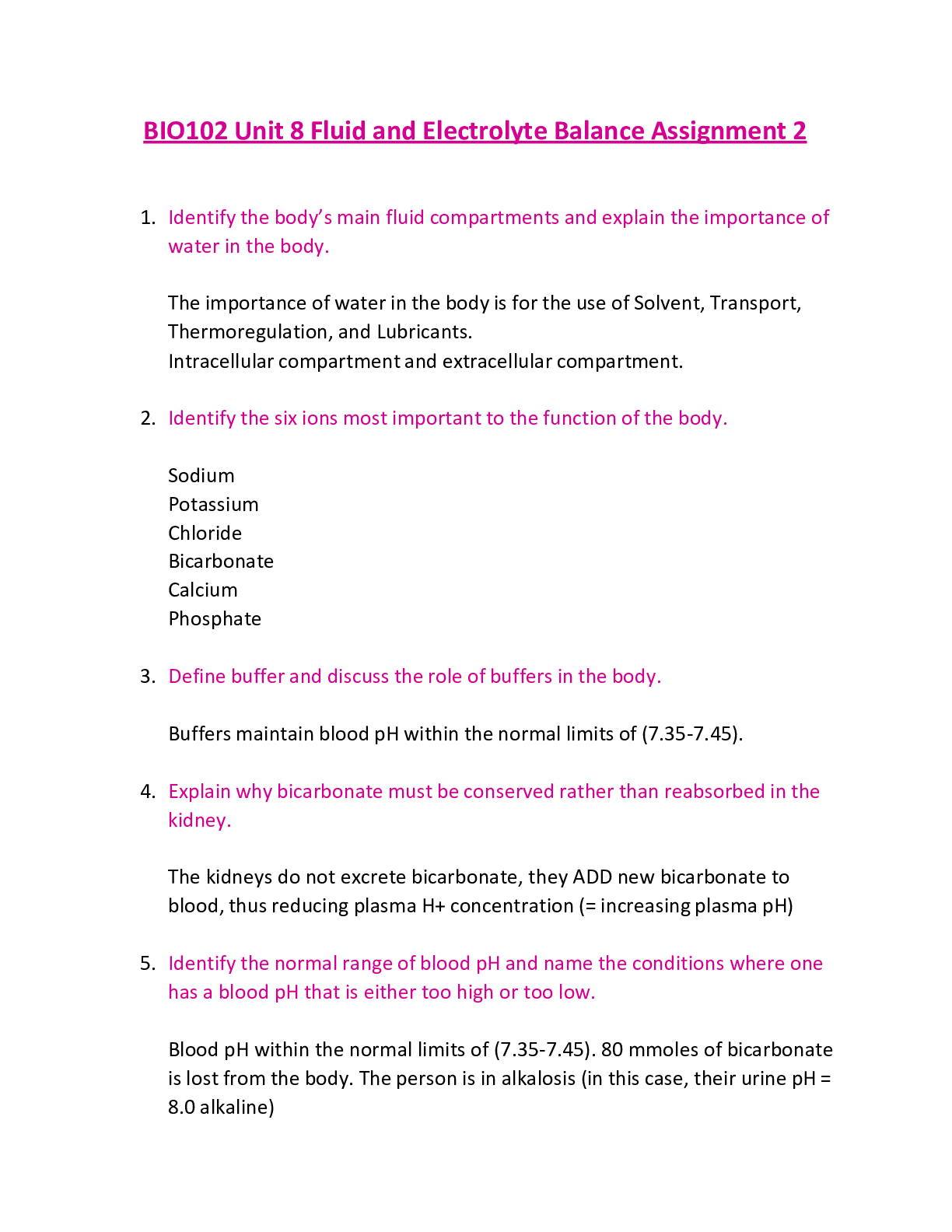
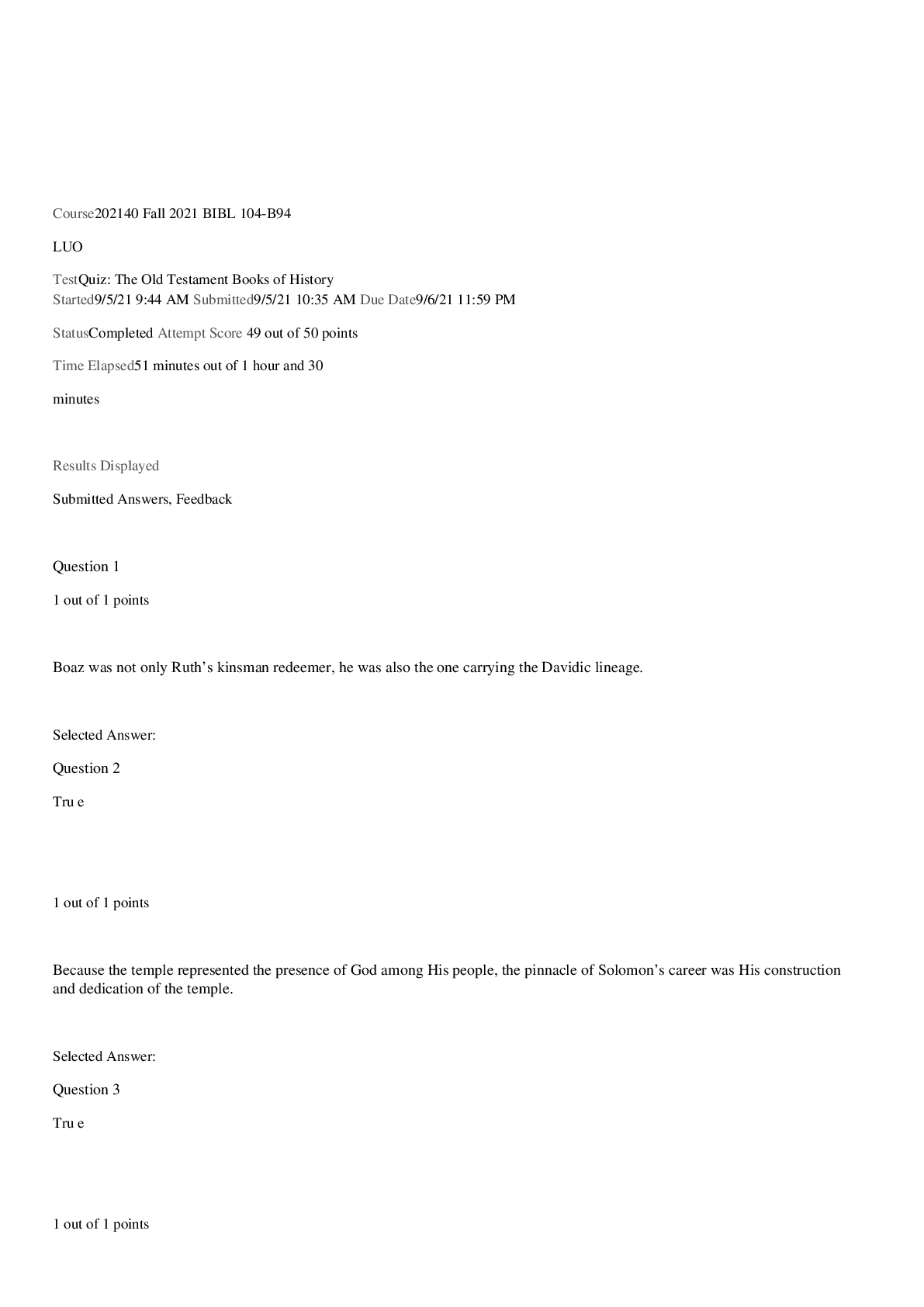
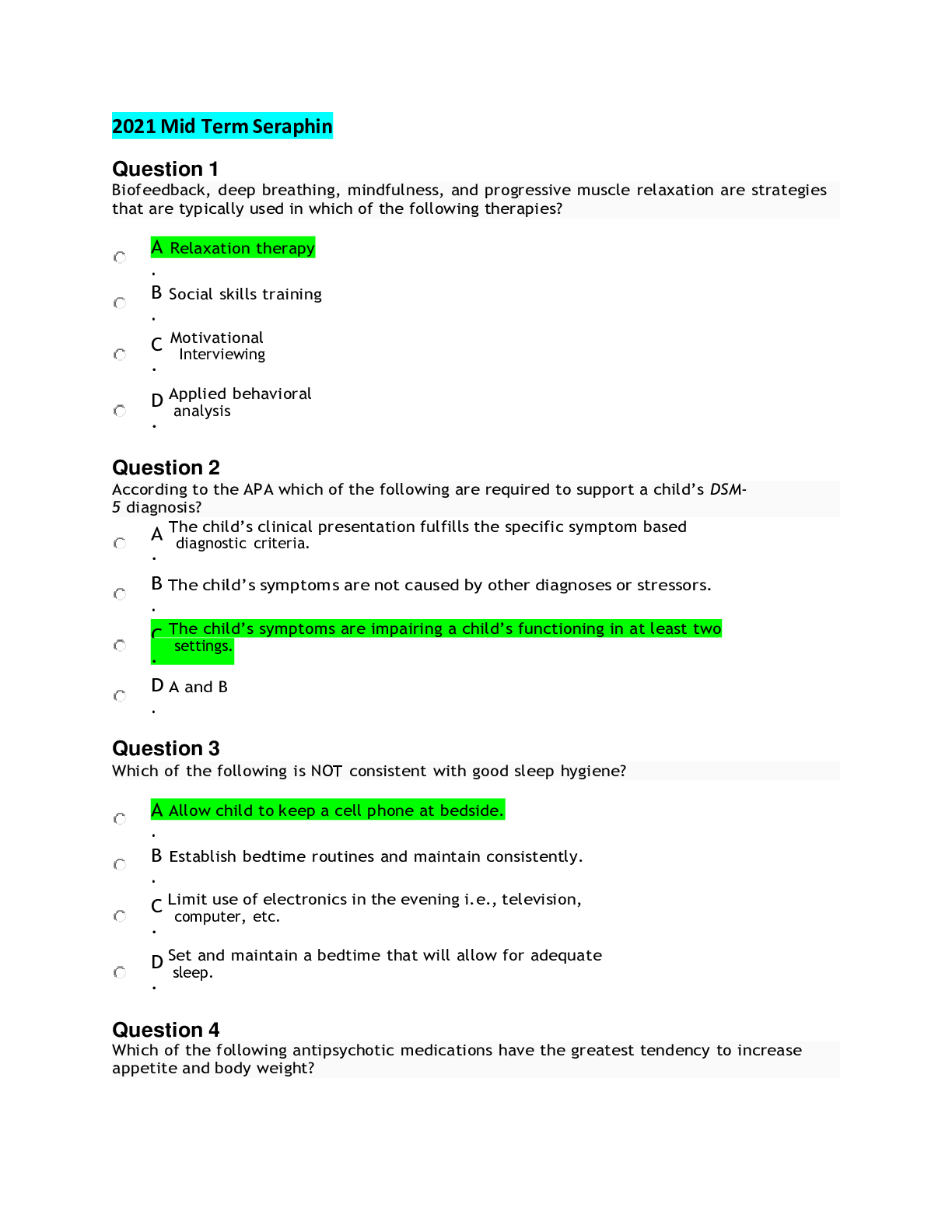




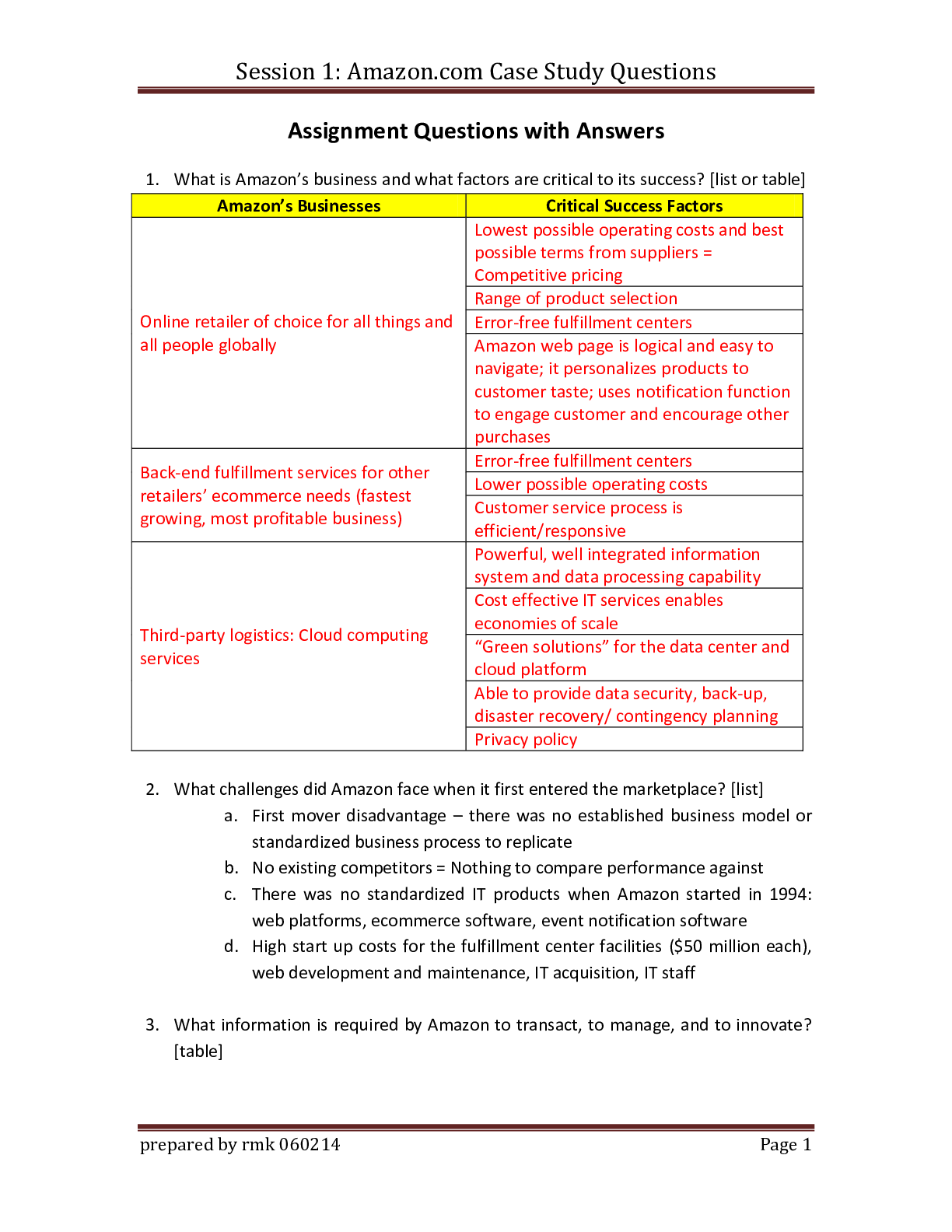
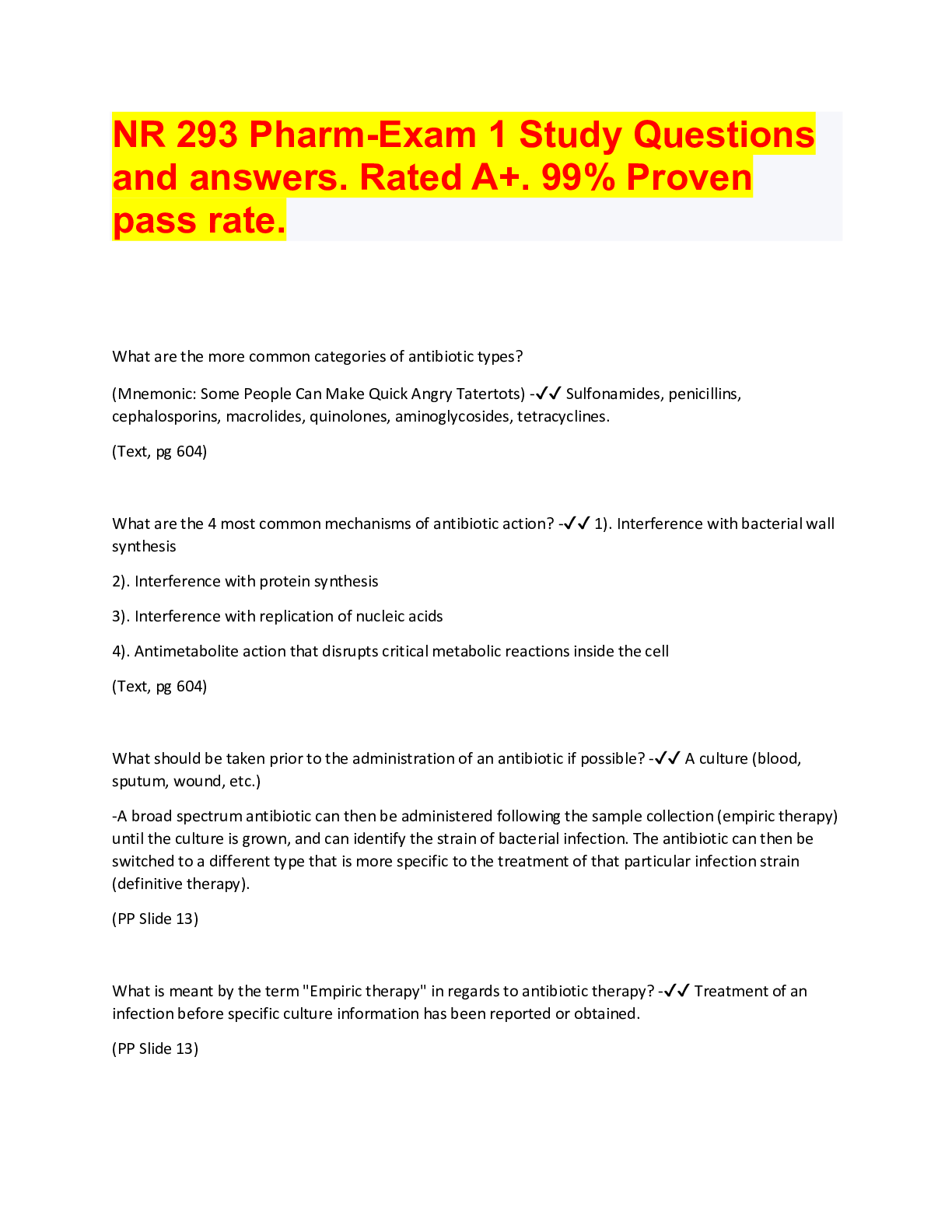
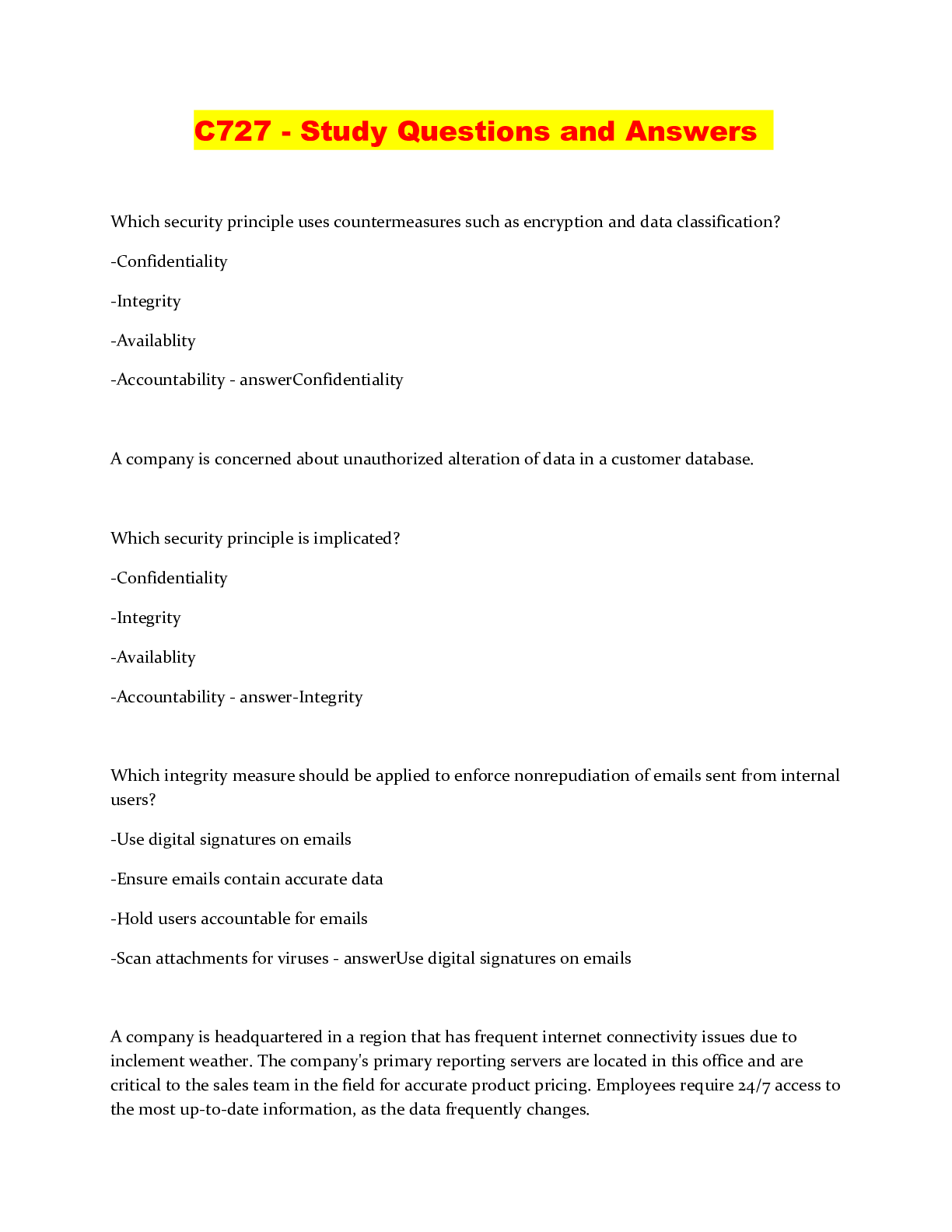
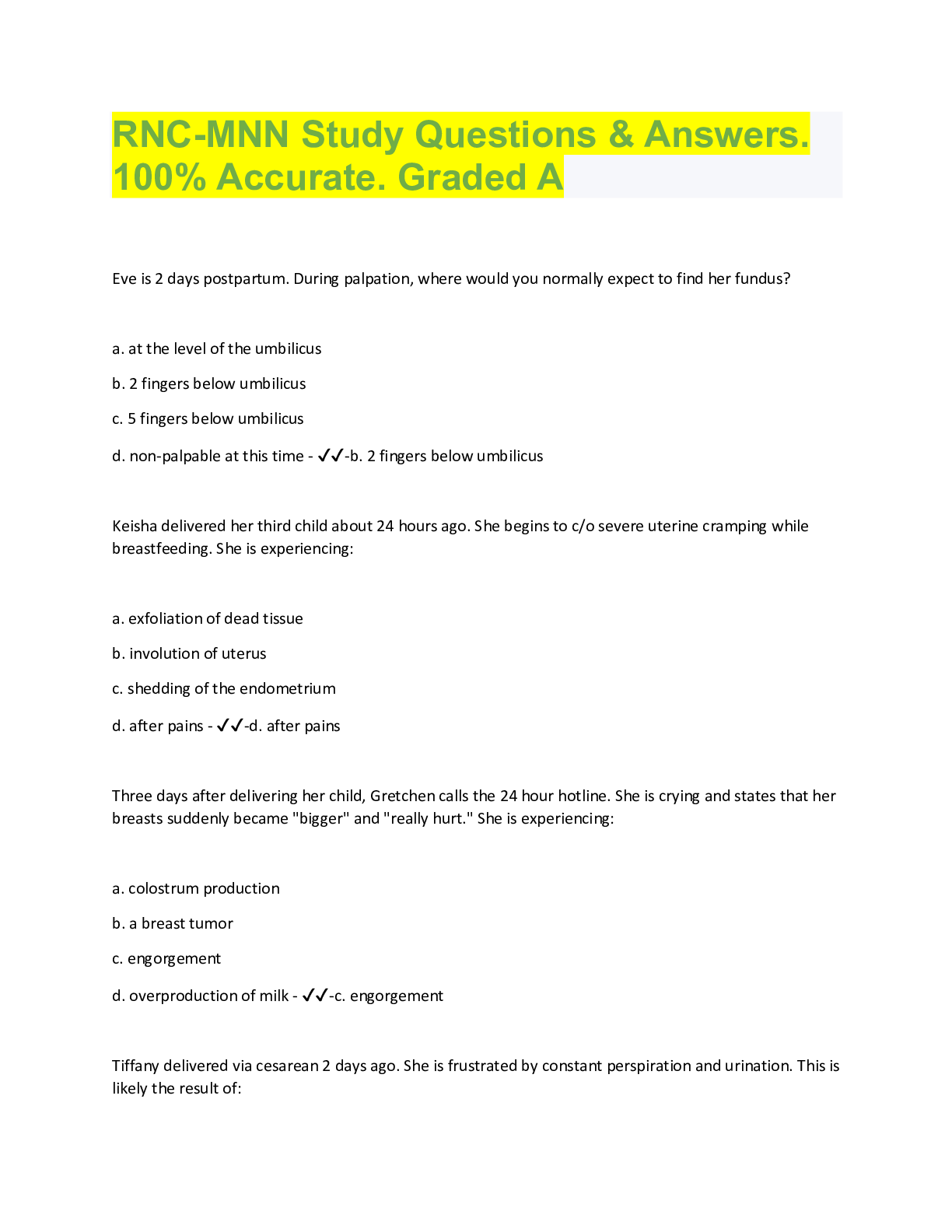

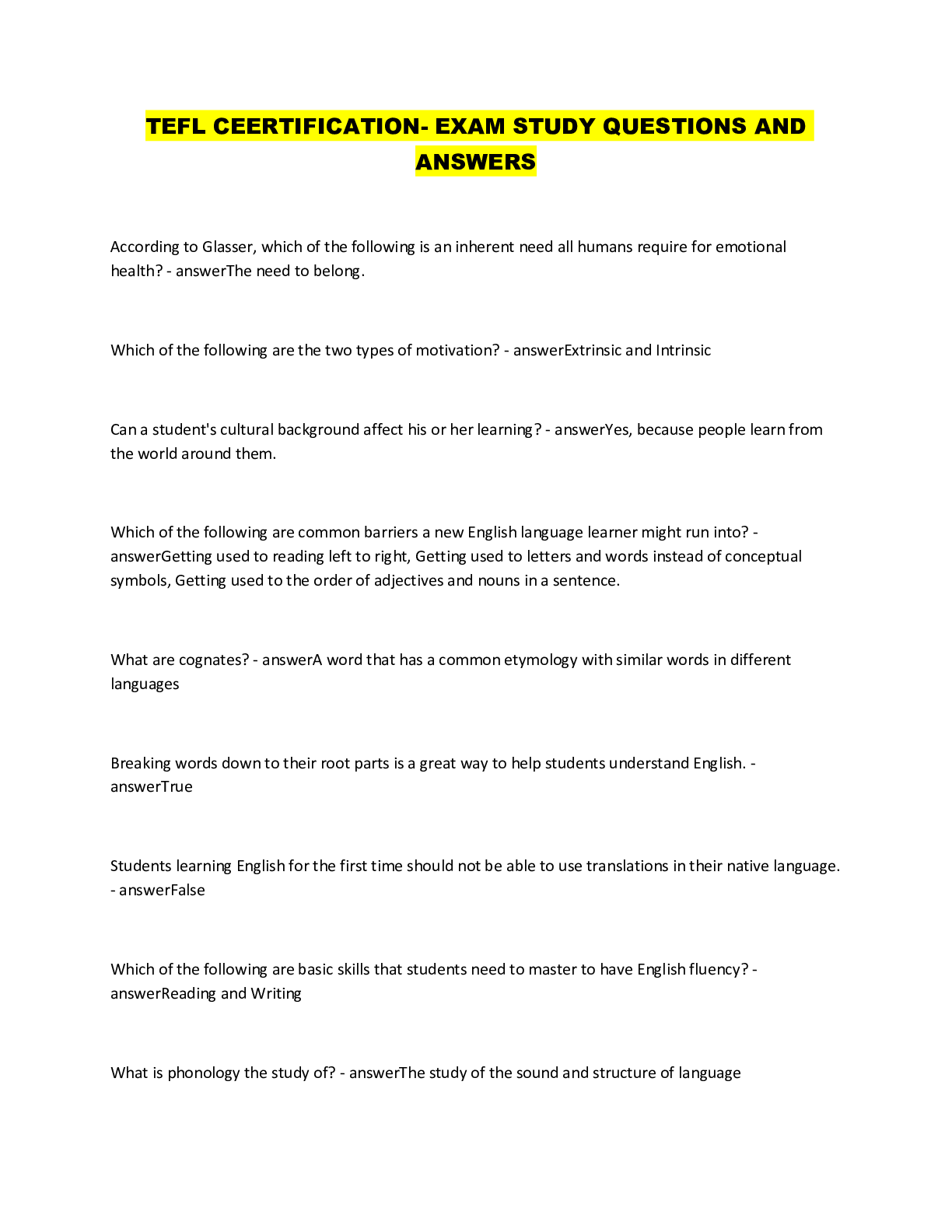


.png)


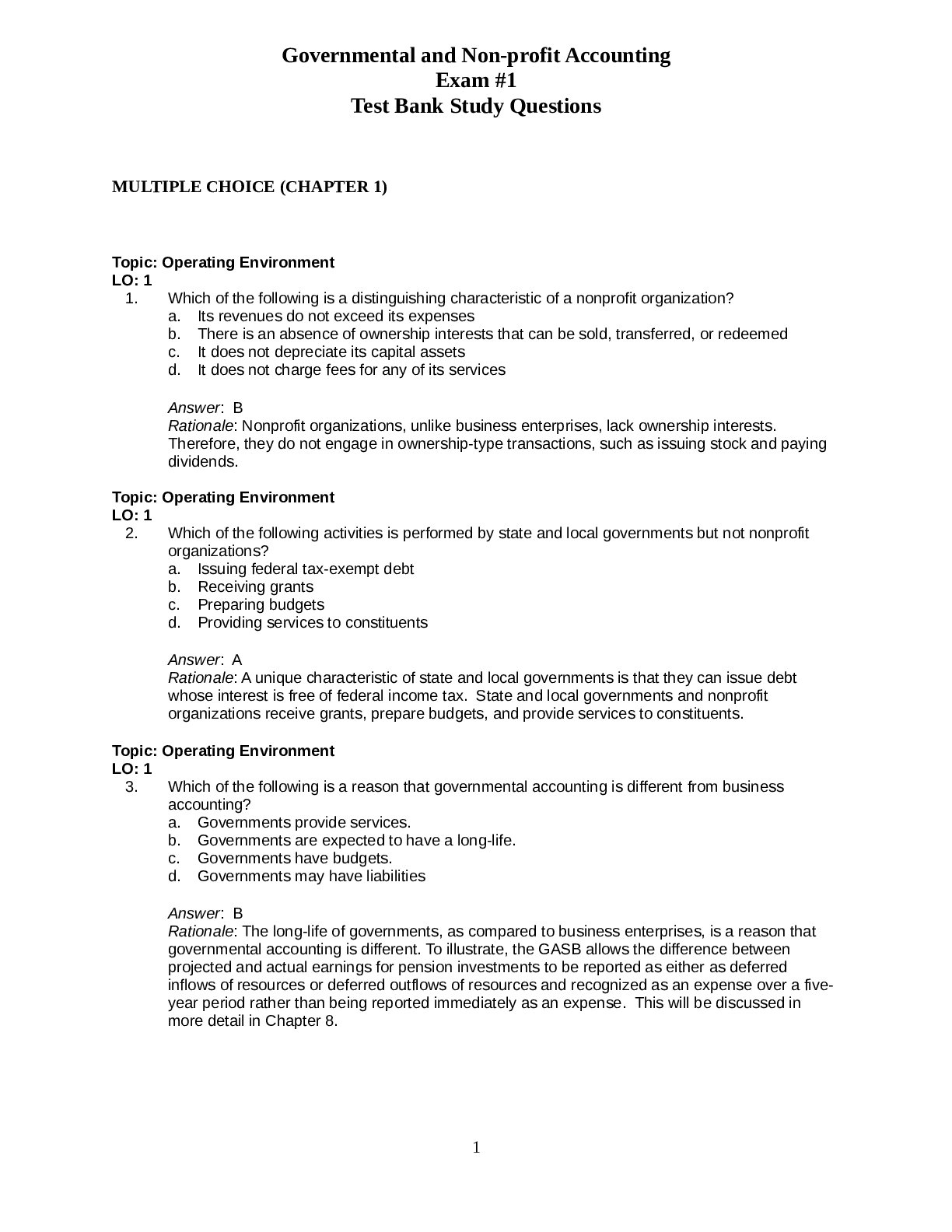

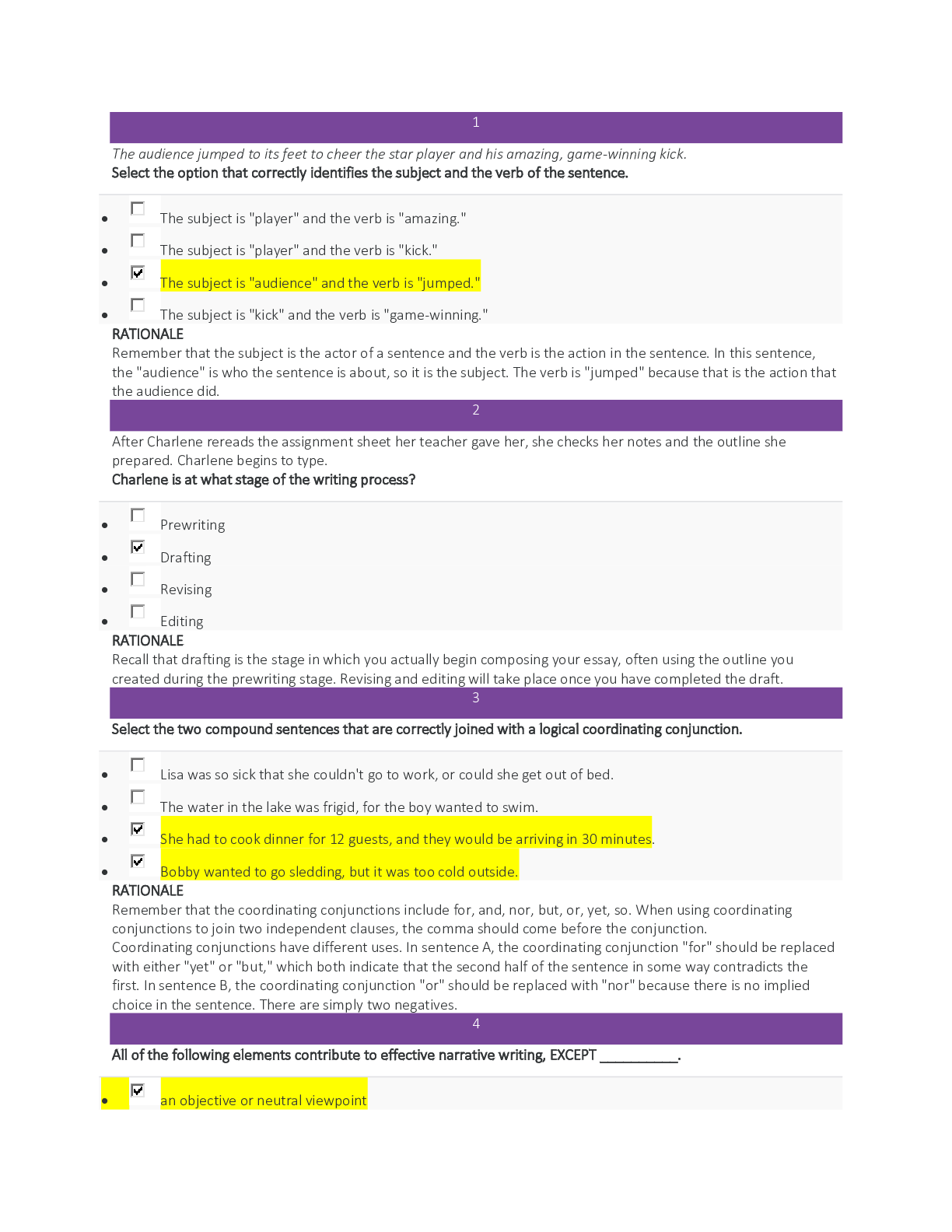
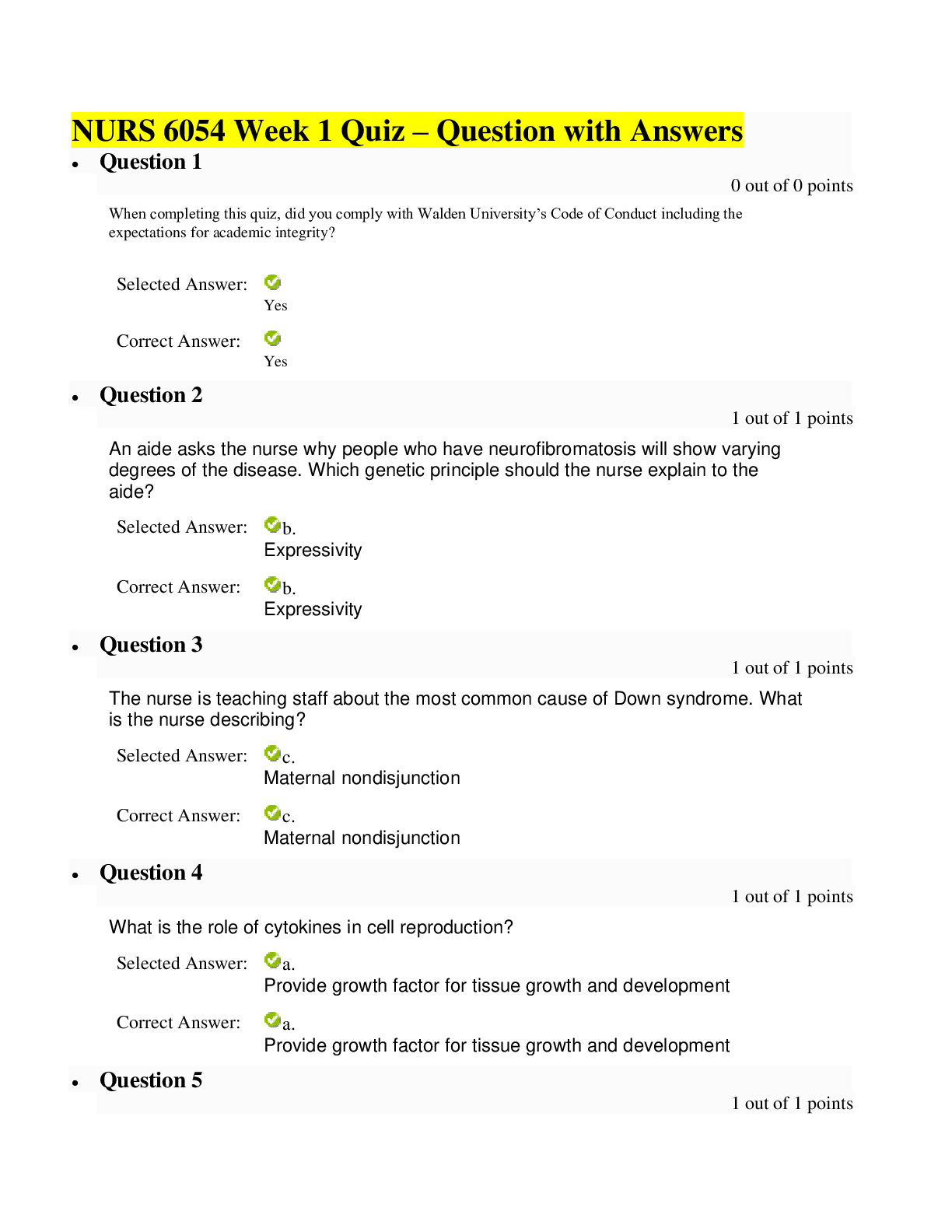
.png)

